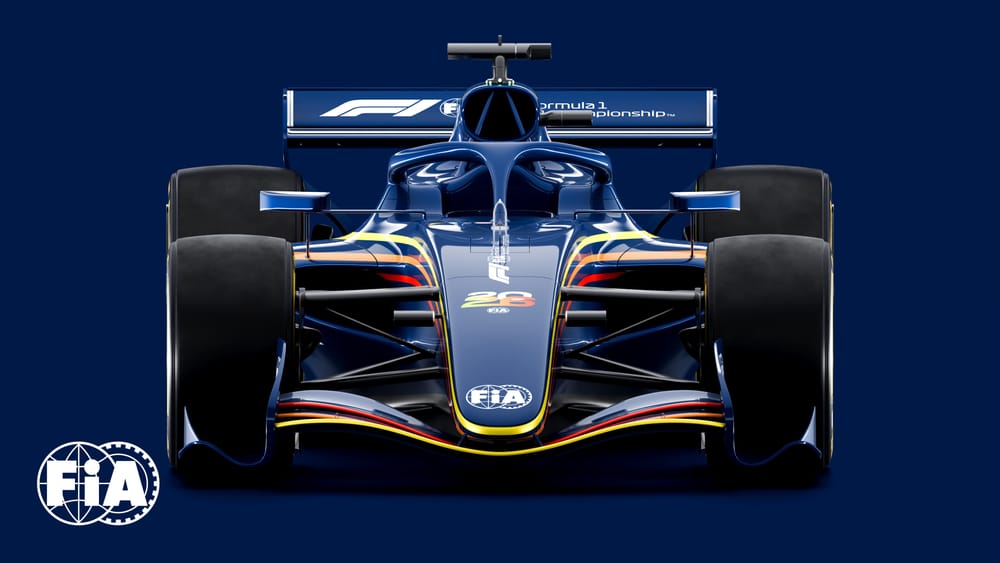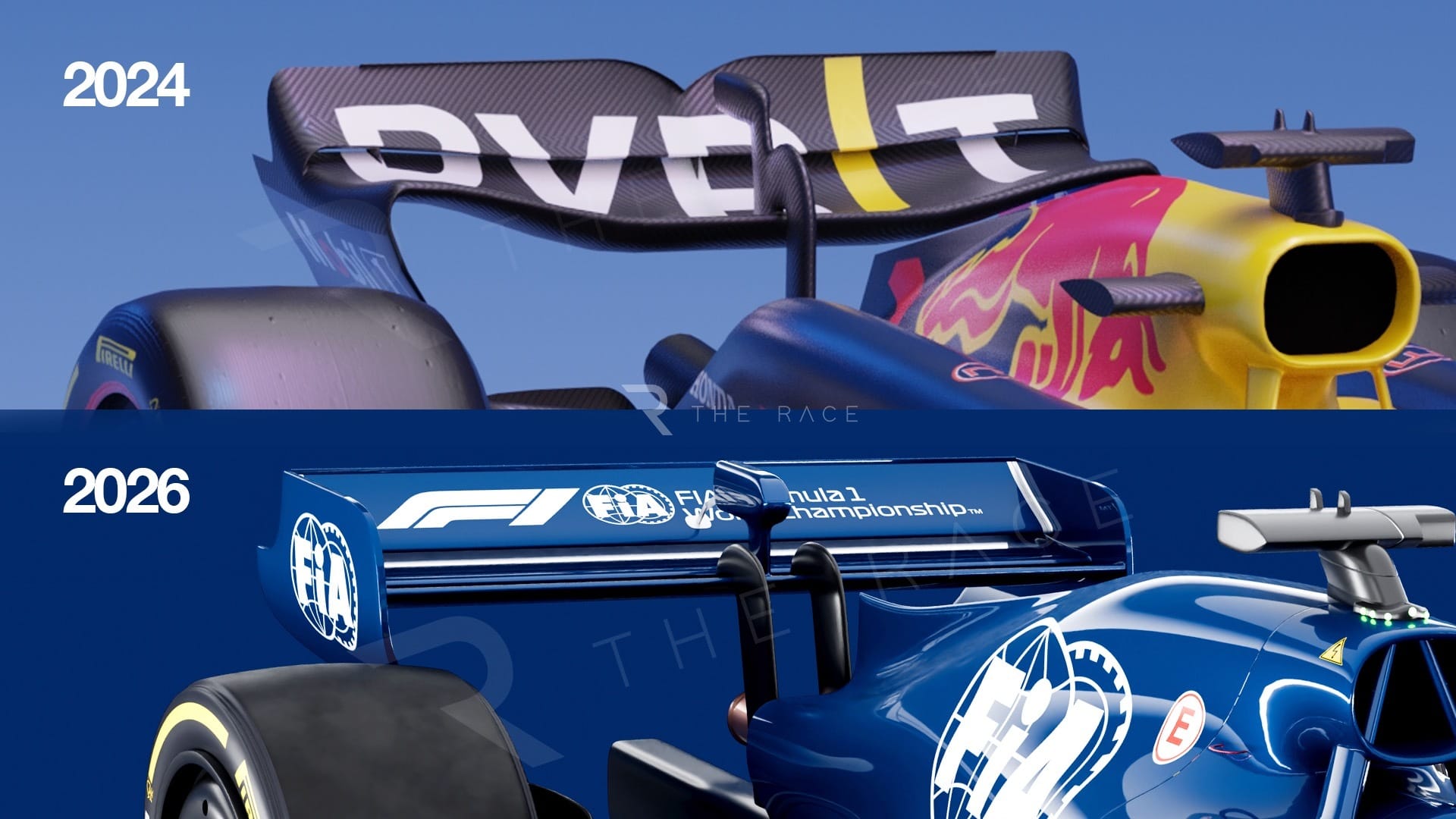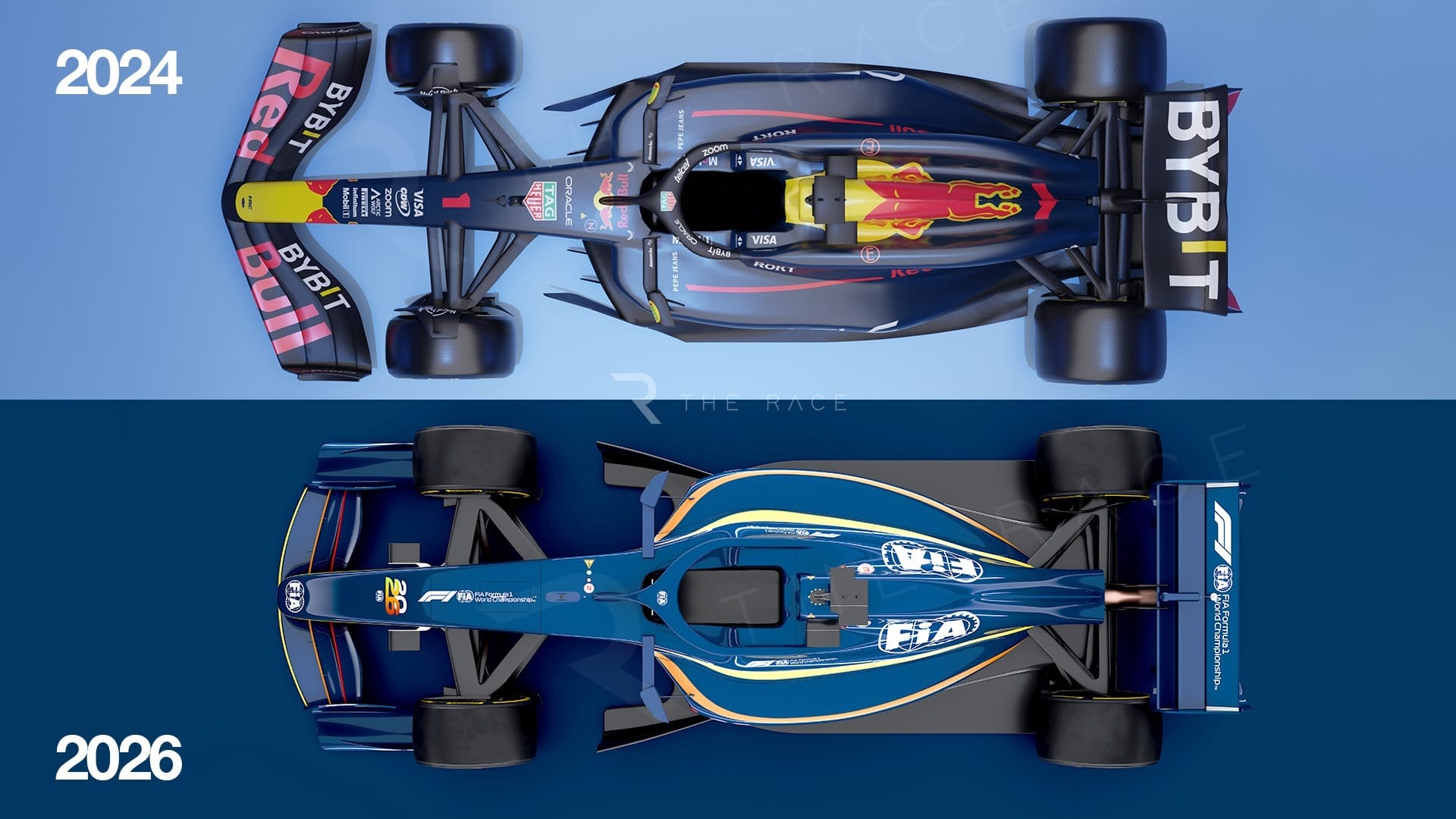Up Next

The first official look at Formula 1’s 2026 car rules has been revealed by the FIA, along with several new key details including dropping the drag reduction system as we know it.
As expected, the next-generation car will be slightly shorter, and slightly narrower, with revised aerodynamic profiling from front to back to create more efficient cars with lower drag, with the aim of making it easier for them to follow each other.
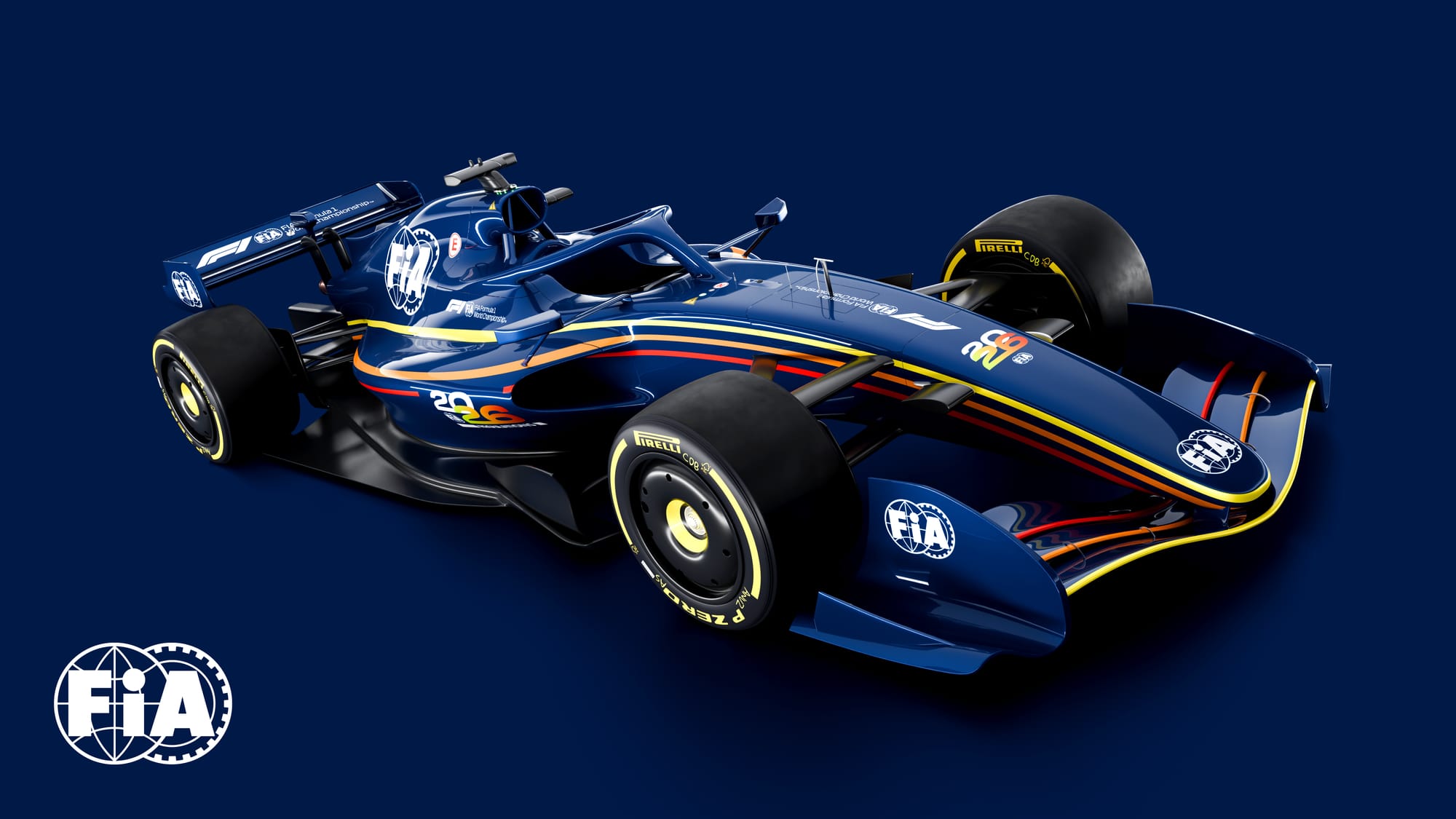
The reduced dimensions are part of an effort to start to reverse how bloated F1 cars have become, having ballooned in mass over the past few rule changes, most notably in the V6 turbo-hybrid engine era that began in 2014.
DRS, which has been used in F1 since 2011, will be replaced with active aerodynamics on the front and rear wing to create a ‘low drag mode’, along with an MGU-K override system that will give chasing cars extra electrical energy to help them overtake.
There are also changes to the front wing, sidepods and floors to build on lessons from the 2022 rules era.
THE KEY CHANGES
Chassis
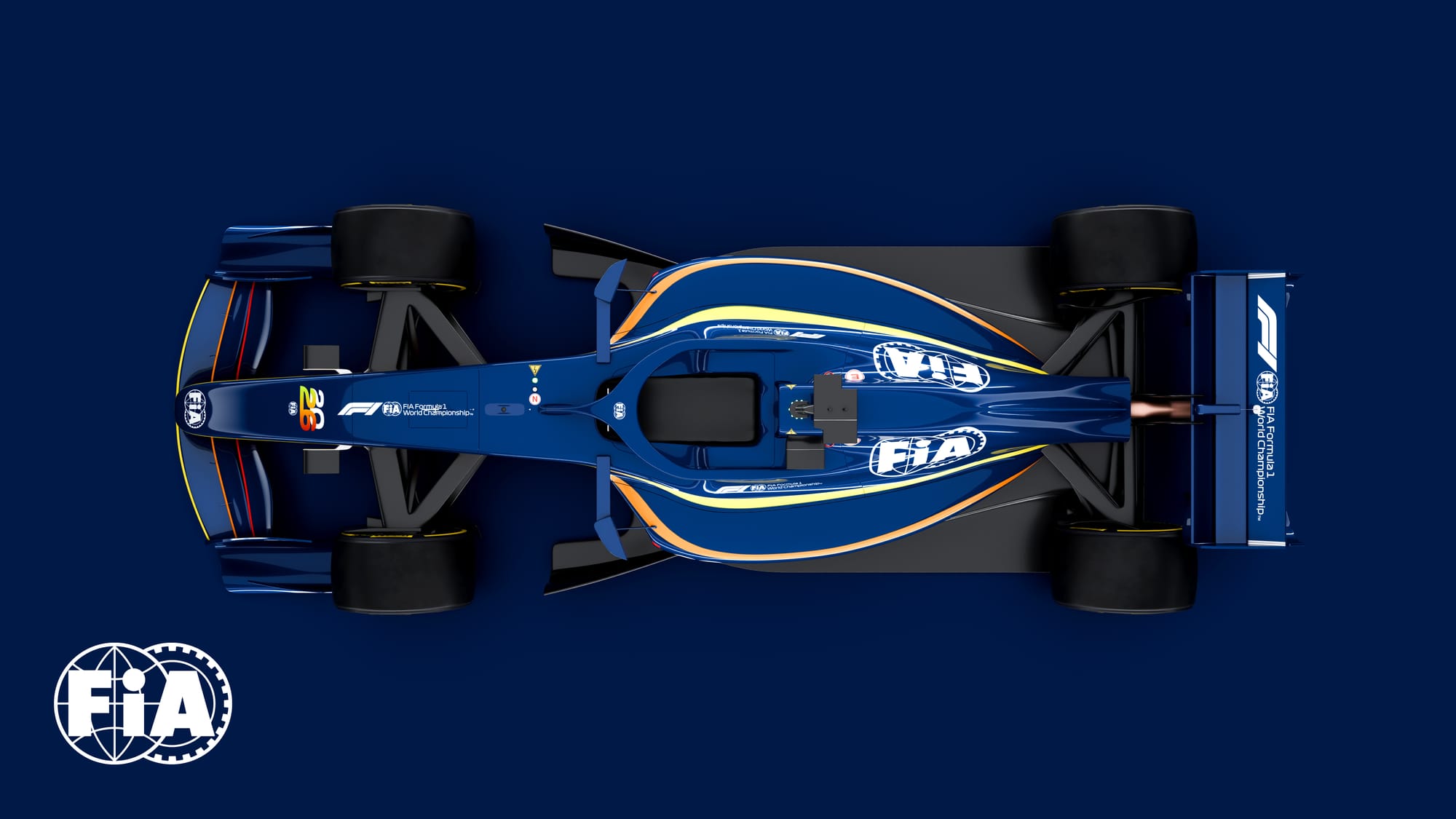
- The FIA is calling this the ‘nimble car’ concept. The total mass of the cars will drop by 30kg, the maximum wheelbase will shrink by 200mm, the total car width will compress 100mm and the maximum floor width will reduce by 150mm.
- 18-inch wheels will remain but the width of the front tyres will reduce by 25mm and the rears by 30mm.
- Front and side impact structures and roll hoops will be revised to improve safety - without adding weight.
Aerodynamics
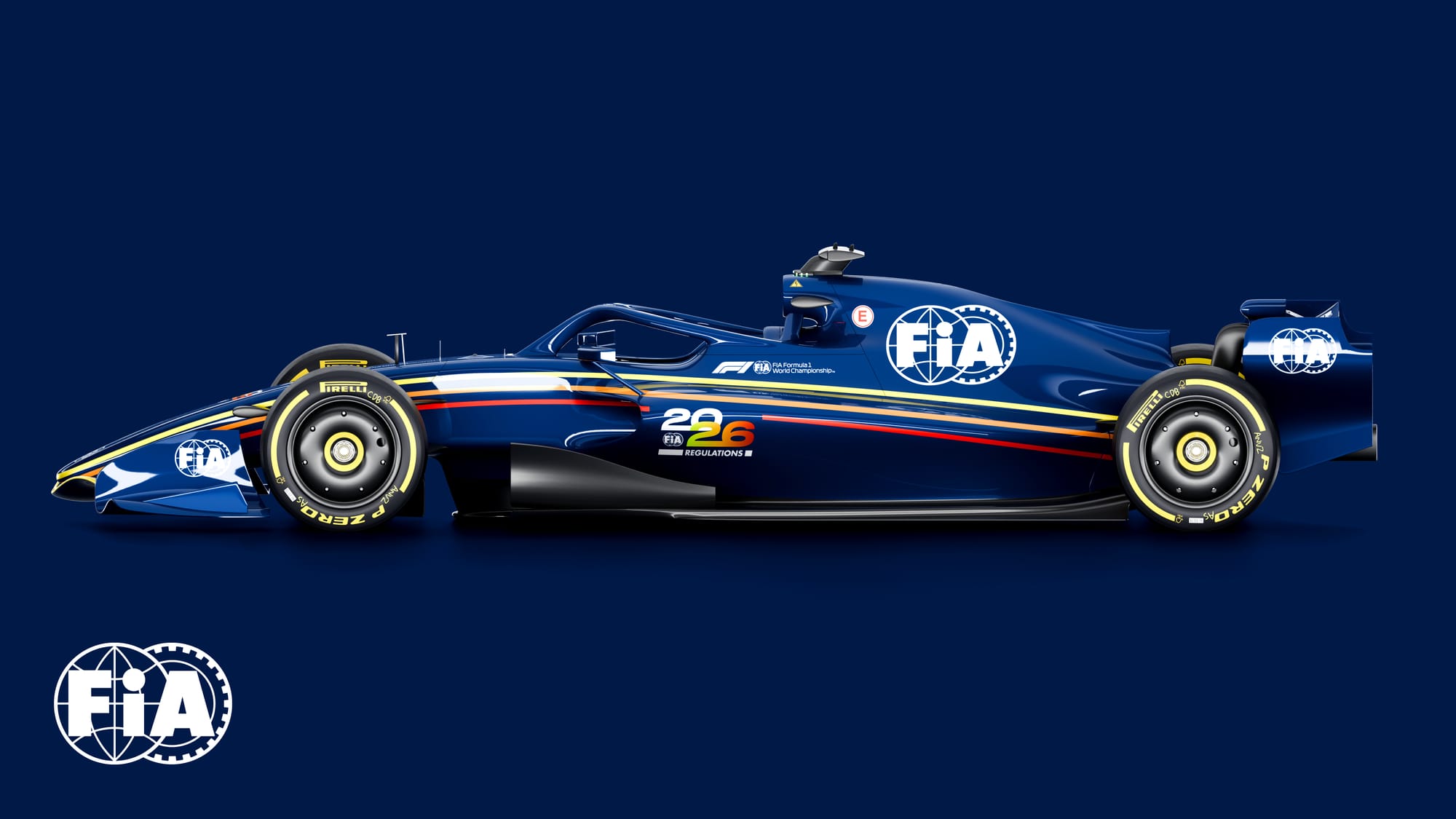
- Downforce levels will reduce by 30% and drag by 55%.
- Active aerodynamics will replace DRS with moveable front and rear wings. Drivers will be able to switch from the standard ‘Z-mode’ (higher downforce) to ‘X-mode’ (low-drag) to increase straight-line speed.
- The front wing will be 100mm narrower with a two-element active flap. A three-element active rear wing will be adopted, with the lower beam wing removed and the endplates simplified.
- The teams’ ability to ‘out-wash’ airflow and disturb the cars following will be limited by mandated pieces of bodywork that ‘in-wash’ the airflow instead.
- Floors will become partially flat and diffuser power will be neutered, reducing the ground effect and the reliance of the cars on ultra-stiff and low set-ups.
Engine
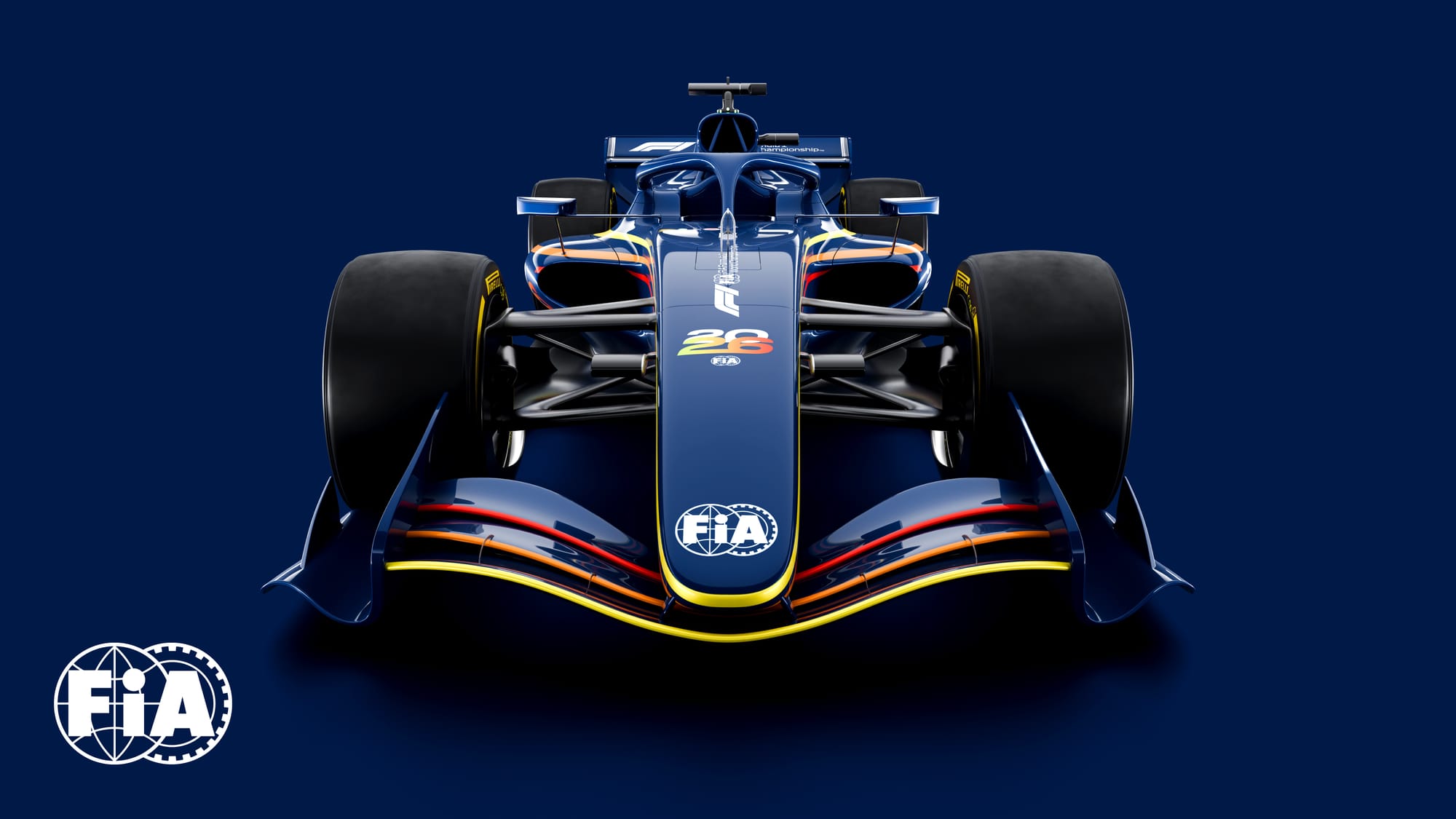
- The MGU-H will be eliminated. ICE power will reduce from 550-560kw to 400kw. MGU-K power will increase from 120kw to 350kw.
- The amount of energy recovered under braking will double, resulting in a total recuperable energy of 8.5 MJ per lap.
- A ‘Manual Override’ mode will taper the recovered energy deployment of a leading car after it reaches 290km/h, dropping to zero at 355km/h, while the following car will benefit from MGU-K override providing 350kW up to 337km/h and +0.5MJ of extra energy.
- The 2026 engines will run on fully sustainable fuel - a key reason Honda is returning to F1, Audi is coming in and Ford is joining up with Red Bull Powertrains.
THE RATIONALE
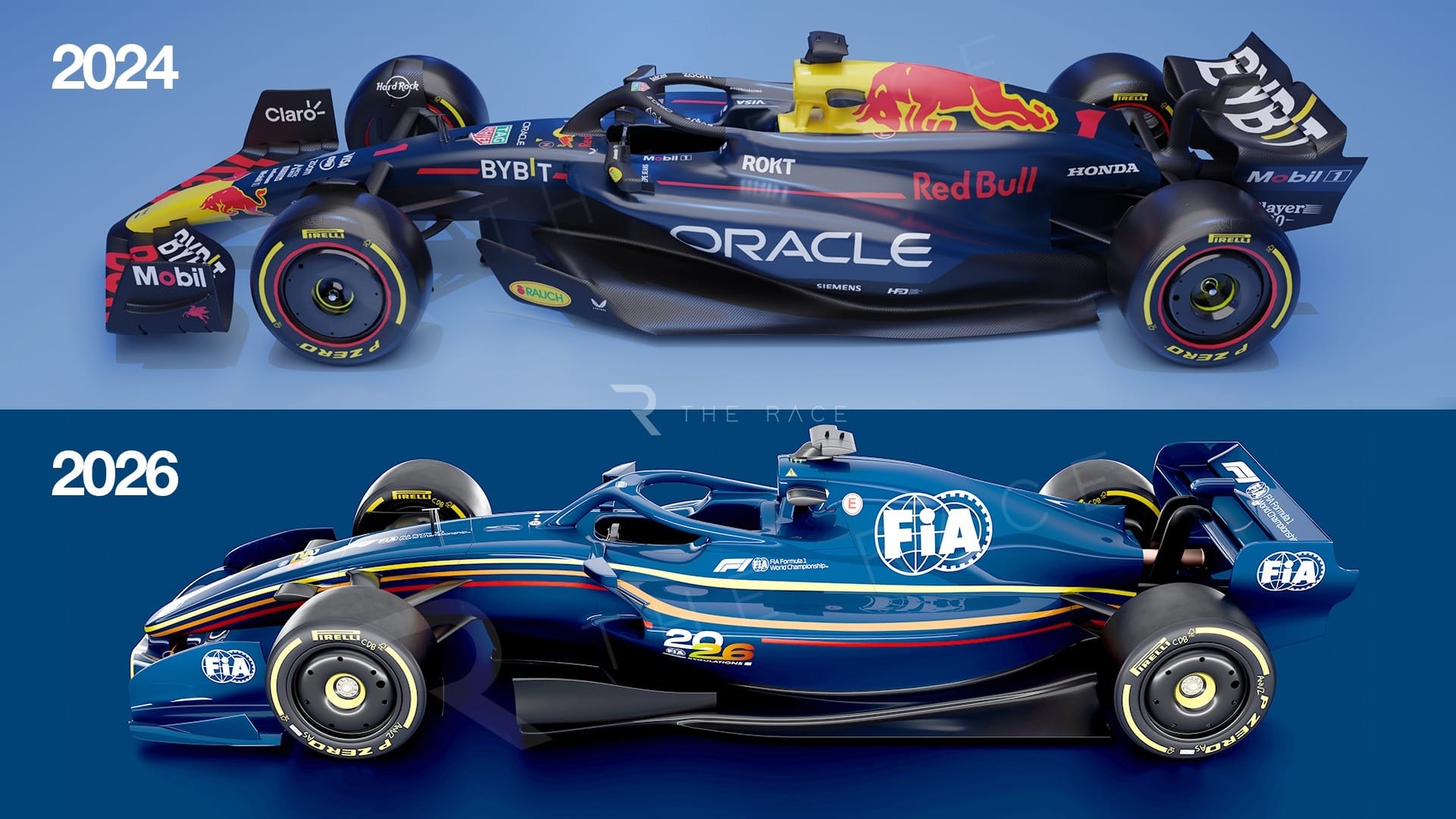
The FIA devoted a lot of research and development time trying to improve the wake characteristics of the current cars, so the chasing car retained more downforce to make it easier to follow.
But the rulemakers realised quickly that the teams’ car development since 2022 had slashed those gains, and the FIA opted to wait until the 2026 rules to address this.
The FIA’s head of aerodynamics Jason Somerville even claims that “re-establishing following car performance” has been the main goal of this 2026 aero rules package.
The desire for such low drag is partly because that’s more sustainable - it requires less energy and fuel to be used - but also because the 2026 engine characteristics are such that the current drag levels would result in what the FIA calls a “severe drop off in speed” on the straights.
The narrower front wing with a distinctive new endplate arrangement goes much further than the current cars in trying to eliminate outwash - where airflow is forced around parts like the front wheels, to avoid a disruptive airflow being channelled through the rest of the car.
The FIA sees this as crucial to improve the wake characteristics and make it easier to follow, as in simple terms, teams love creating outwash for performance reasons but it’s a killer for racing.
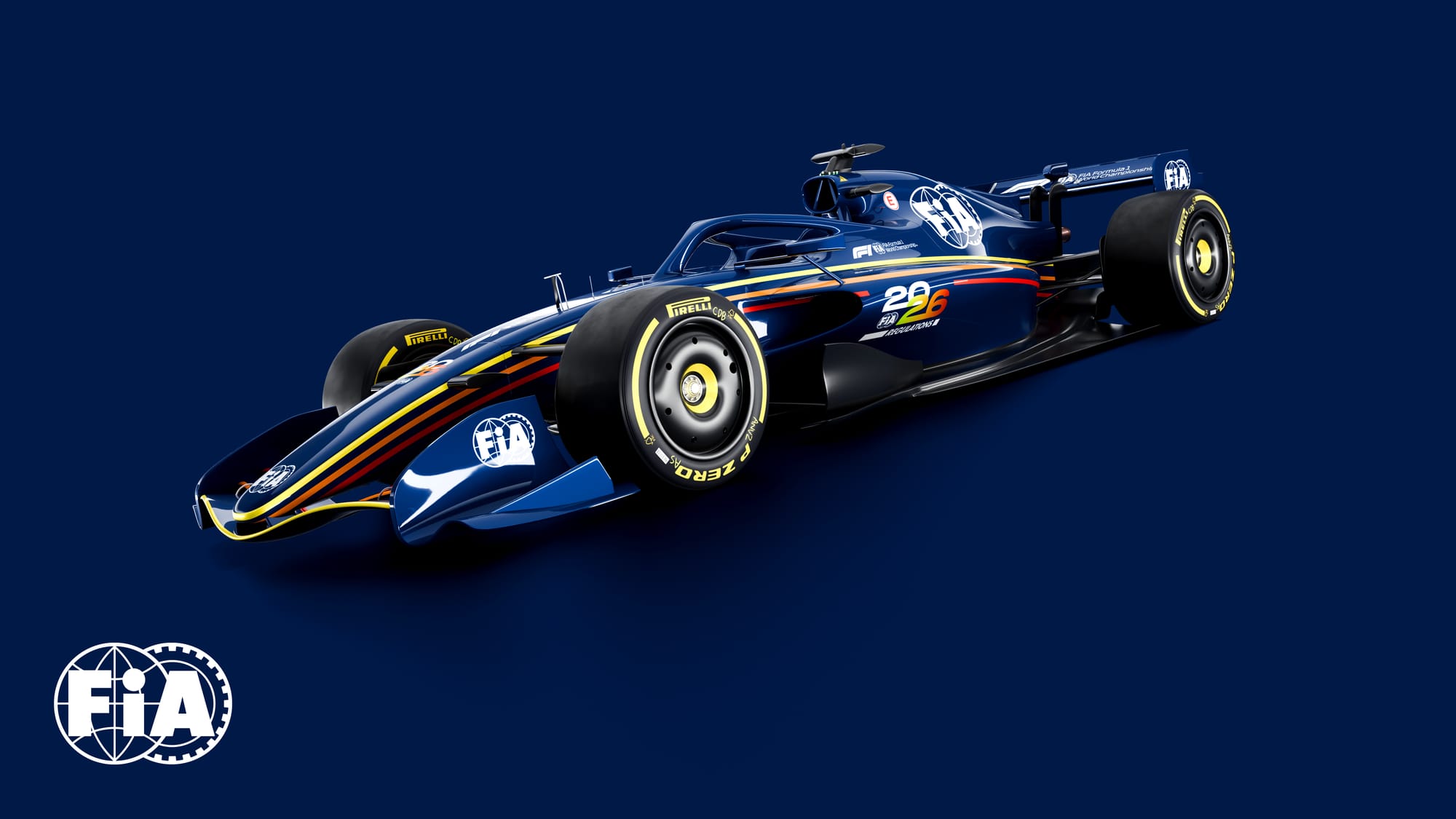
The fact an override function is being introduced to boost the electrical energy deployed at the end of the straights by the car behind compared to the car in front - provided (as with the current DRS) they are within a certain unspecified distance of the car in front - suggests the profile of the new cars will still inherently make overtaking difficult.
The emphasis on cars with much lower drag than before will create a much-reduced slipstream effect, so what the new car and engine regs are trying to achieve, in combination, is an emphasis on energy management and deployment that offsets this - to make sure that overtaking is still possible, but not too easy.
THE NEXT STEPS
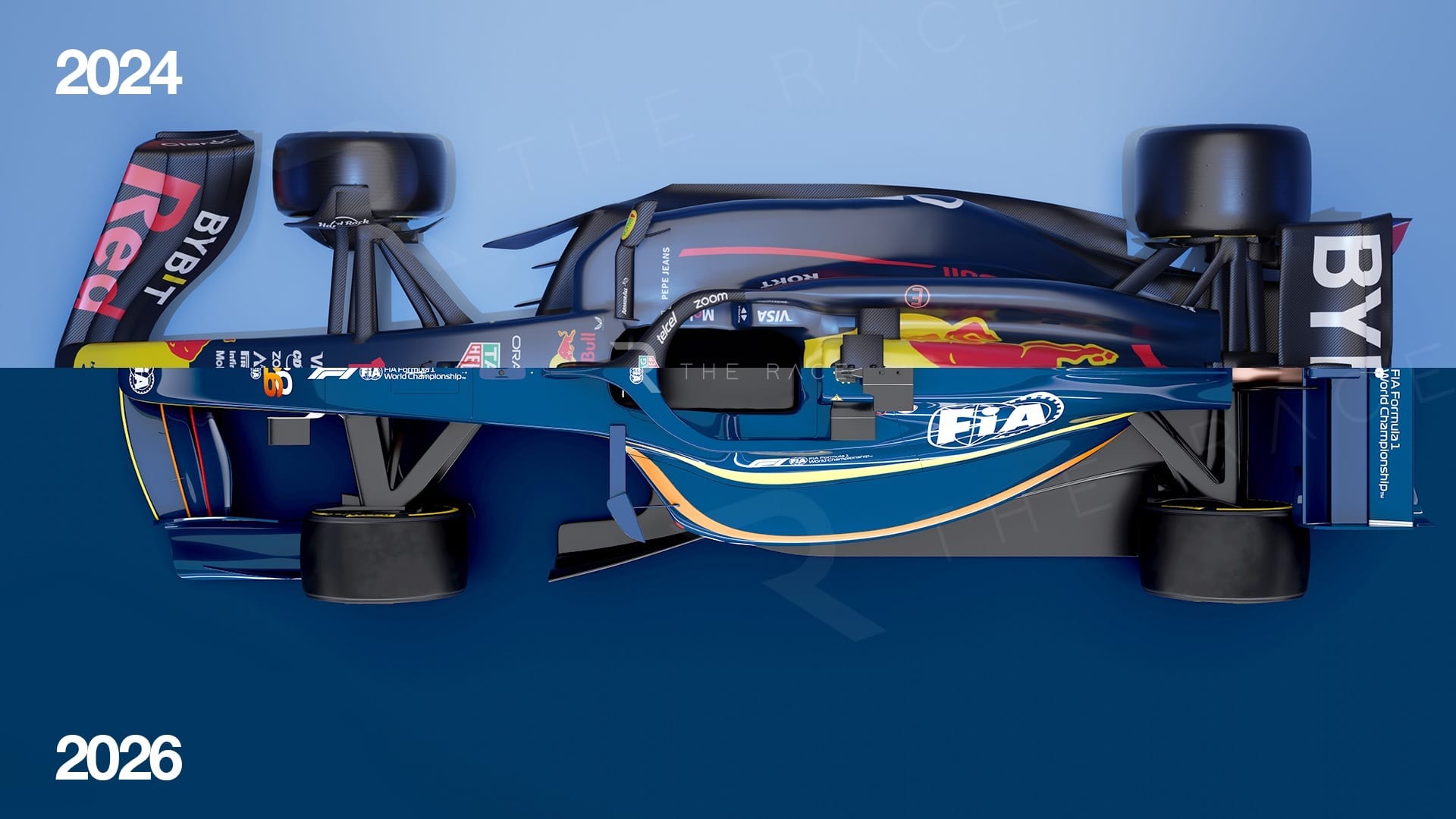
More details will be shared later in the Canadian Grand Prix weekend. However, the full regulations are not expected to be published until later in June, as the FIA World Motor Sport Council still needs to sign off on them.
Finalising the car rules means other key details will soon be locked in, such as the usage of the new ‘manual override’ system that will deliver an electrical power boost at high speed.
The override function will only be available at certain points on the track, in defined conditions, but we still don’t know how long the override function will last or how many times a driver can use it per lap or per race.
The engine rules themselves have been locked in for several years. The move from around 80/20 to something closer to a 50/50 split between internal combustion engine power and electrical power from an uprated MGU-K has been the source of controversial debate about the new rules.
Red Bull, which is preparing to run its own in-house F1 engine for the first time in collaboration with Ford, has been the most vocal opponent of the package.
It has been argued that the sizeable increase in the significance of the hybrid element will cause bizarre tactics and utilise the V6 mainly as a generator to charge the battery, with the chassis rules compromised to try to make the car workable around this. However, this has been emphatically refuted by the FIA.

